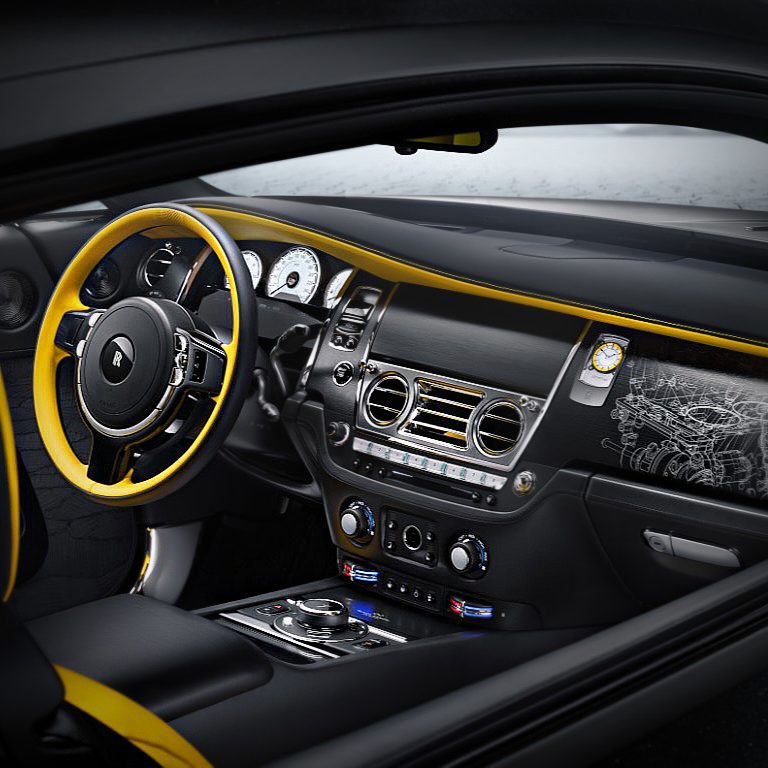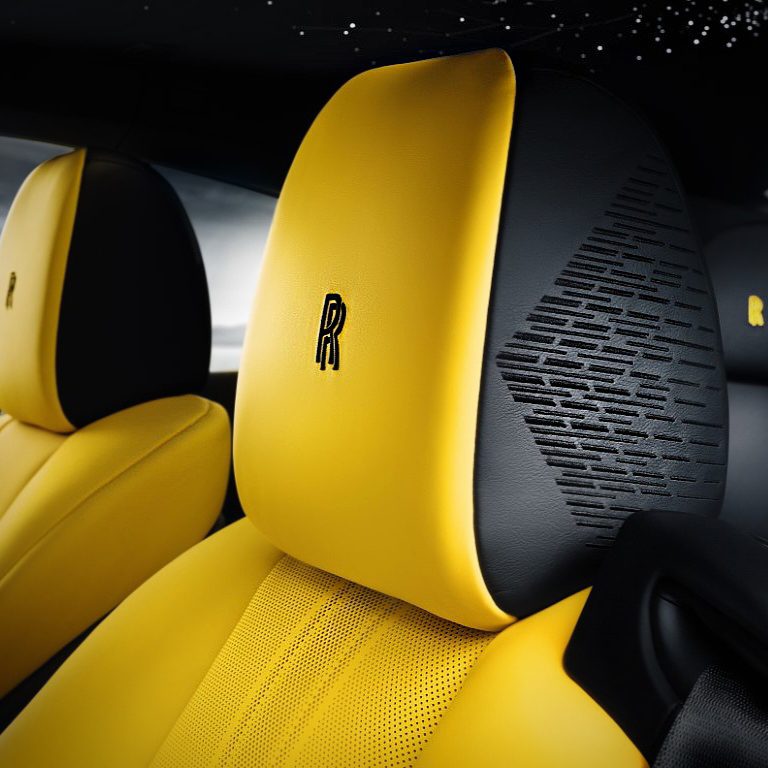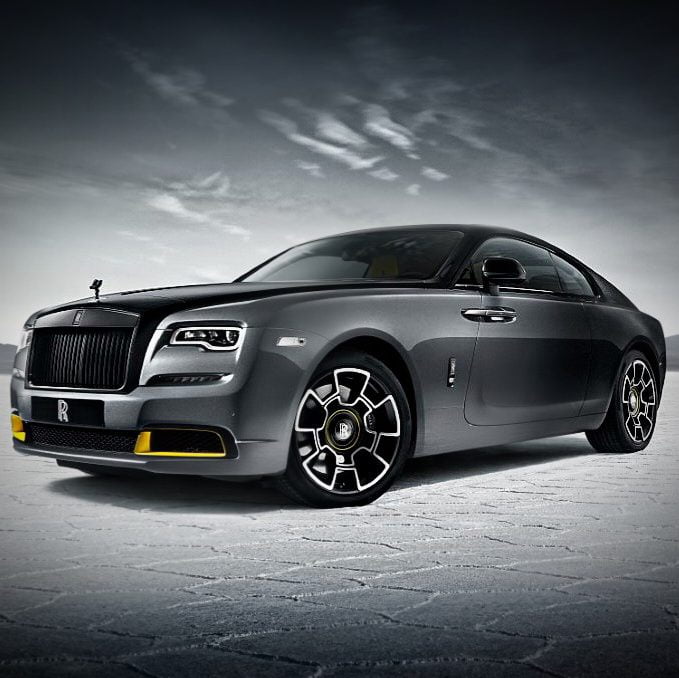Rolls-Royce Motor Cars unveils Black Badge Wraith Black Arrow to mark the end of production of one of the most transformative motor cars in the marque’s history. This Bespoke masterpiece, limited to just 12 examples worldwide, is also the last V12 coupé Rolls-Royce will ever make as it embarks on its bold new electric era and all 12 cars have already been allocated to clients around the world. While delivery of both Wraith and Dawn commissions to the United States concluded in 2022, these twelve commissions have already found homes in other countries across the globe.
WRAITH: A CULTURAL ICON
Launched in 2013, Wraith is one of the most important and influential models ever designed and built at Goodwood. More performance-focused than its predecessors Phantom and Ghost, Wraith fundamentally altered perceptions of Rolls-Royce and brought new, younger customer groups to the brand for the first time. Its wider cultural significance is underlined by countless references to the Wraith in music, cinema, art, and fashion.
THE V12 CONNECTION
Wraith’s dramatic ‘fastback’ silhouette signaled the motor car’s dynamic intent, which was further amplified in 2016, with the introduction of Black Badge Wraith: a potent, subversive, and even more powerful expression of this transformative motor car, offering some of the highest levels of performance ever achieved by a V12-powered Rolls-Royce.
When considering how best to mark the end of the Wraith era, Goodwood’s designers and engineers took inspiration for the Black Badge Wraith Black Arrow Collection from an equally significant V12 in Rolls-Royce‘s long and storied legacy. In 1938, Captain George Eyston – whose bold, brave endeavors encapsulate the Black Badge spirit – set a world land speed record of 357.497 mph (575.335 km/h) with Thunderbolt, a seven-ton, eight-wheeled leviathan equipped with two Rolls-Royce V12 ‘R’ Series aero engines.
Thunderbolt’s record attempts took place on the legendary Bonneville Salt Flats in Utah. Against the glare of the brilliant white surface, and under a blazing desert sun, the reflections from the car’s polished aluminum body made it almost impossible to tell precisely when it passed the timing equipment. Eyston’s simple but ingenious solution was to paint a large black arrow on the car’s sides, incorporating a yellow central circle motif that could be seen clearly even at high speed. This is what gives today’s Black Badge Wraith Black Arrow Collection both its name and unique historical context.
V12 LEGACY FASCIA
To commemorate Rolls-Royce’s last-ever V12 coupé, the marque’s Bespoke Collective of designers, craftspeople, and engineers collaborated to create a unique artwork for Black Badge Wraith Black Arrow’s fascia. The intricate, tactile design skillfully depicts the contemporary V12 engine in Wraith. In keeping with the Black Badge family’s noir ambience, the highly complex design – itself the product of two months of development – is engraved in a single sheet of black-coated aluminum to reveal the gleaming metal beneath, providing a bold visual link to Thunderbolt’s polished aluminum body.
RECORD CONSTELLATION
Given Thunderbolt’s record-breaking status, it is only fitting that Black Arrow incorporates a record of its own. Casting a dramatic night’s-sky ambience over the interior suite, Black Badge Wraith Black Arrow’s Bespoke Starlight Headliner incorporates 2,117 fiber-optic ‘stars’ – the greatest number ever seen in a Rolls-Royce motor car. All individually arranged by hand, the ‘stars’ depict the Milky Way as seen from vast open spaces, and the constellations precisely as they would have appeared over the Salt Flats in Utah on 16 September 1938, the date of Eyston’s final, immutable record.








